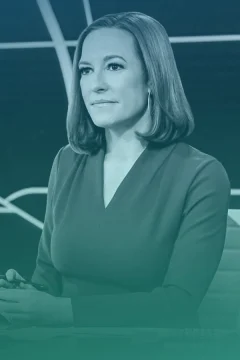Leave it to President-elect Donald Trump to take one Washington crisis and add another one on top. As a plan to keep the federal government over the holidays began to waver this week, Trump injected a new demand: pausing — or altogether abolishing — the debt ceiling before he takes office in January.
This was always going to be an action item for the incoming Congress, as a previous punt on the issue is due to expire on Jan. 1. But Trump’s demand for speedy action was based on political maneuvering from him, not any altruistic concern for the country’s fiscal health. And while things are still very fluid as of Friday afternoon, it appears the House GOP will move forward with a new package that doesn’t include a debt ceiling increase. It’s just as well, as the proposed solution to appease him — that the House considered (and rejected) on Thursday night — would have been the worst of all worlds.
The GOP’s position on the debt ceiling is entirely consistent, so long as you accept that it is completely dependent on which party controls the White House.
The GOP’s position on the debt ceiling is entirely consistent, so long as you accept that it is completely dependent on which party controls the White House. If a Republican is in office, the debt ceiling is an inconvenience that must be dealt with before blowing up the deficit and requiring more federal borrowing with massive tax cuts. In contrast, with President Joe Biden in office, House Republicans were in such a lather about raising the debt ceiling that they nearly allowed a default on America’s debt last year.It was only a last-minute deal with Democrats that prevented a major financial meltdown. In return for a pause until after the presidential election, former Speaker Kevin McCarthy, R-Calif., won a set of spending caps from the Biden administration and clawed back some spending on Democratic priorities. But the far-right’s anger over that deal, and McCarthy’s subsequent abandonment of his end of the bargain with Democrats, helped usher him out of the speakership.
Fast-forward to the current chaos around the short-term funding bill that is needed to prevent a holiday shutdown. Trump and his vice president-elect, Sen. JD Vance, R-Ohio, put out a statement on Wednesday night calling for the bill that Speaker Mike Johnson, R-La., to be rejected if it didn’t address the debt ceiling as well. “Increasing the debt ceiling is not great but we’d rather do it on Biden’s watch,” the statement posted to Vance’s X account read. “If Democrats won’t cooperate on the debt ceiling now, what makes anyone think they would do it in June during our administration? Let’s have this debate now.”

Trump then went further on Thursday morning, when he called for abolishing the debt ceiling entirely in an interview with NBC News. Doing so would be the “smartest thing it [Congress] could do. I would support that entirely,” Trump said. “The Democrats have said they want to get rid of it,” he added. “If they want to get rid of it, I would lead the charge.”It’s not exactly a tough puzzle to crack to see why Trump would be fine with getting rid of the debt cap entirely before he takes office — or at least making Democrats be the ones to do it. It would be his administration that would be forced to scramble to take the “extraordinary measures” needed to keep paying the government’s bills until the debt ceiling is lifted and new borrowing is permitted. Meanwhile, raising the debt ceiling is a no-go for many on the right, even though it only allows government to pay for past spending and the debt from borrowing those funds. It’d be obviously preferable to pin the raise itself on Democrats, while benefiting from a period where any increase to the debt would be subject to the fiscal version of “out of sight, out of mind.”
Politico Playbook reported on Thursday that Trump had been pushing Johnson to address the matter before his new term begins in January. Johnson realized, though, that doing so requires concessions from Democrats to get onboard, given the opposition from some members of his own caucus. That would make it much more likely for him to go the way of McCarthy when the House votes on a speaker in the new Congress. But it was billionaire Elon Musk’s fanning the flames of opposition to the short-term deal that Johnson had nearly worked out with Democrats that offered Trump a chance to pounce.
In an effort at appeasing the incoming president, Johnson put forward a bill on Thursday which included a two-year suspension of the debt ceiling. It would be a continuation of the trend we’ve seen since 2019, where the debt ceiling isn’t raised per se — that would involve specifically defining a new limit to the amount that the federal government can borrow. Instead, the new go-to move is merely pausing the debt ceiling until a later date without having to put your name to a specific figure that will necessarily have to include the debt incurred during the pause.












